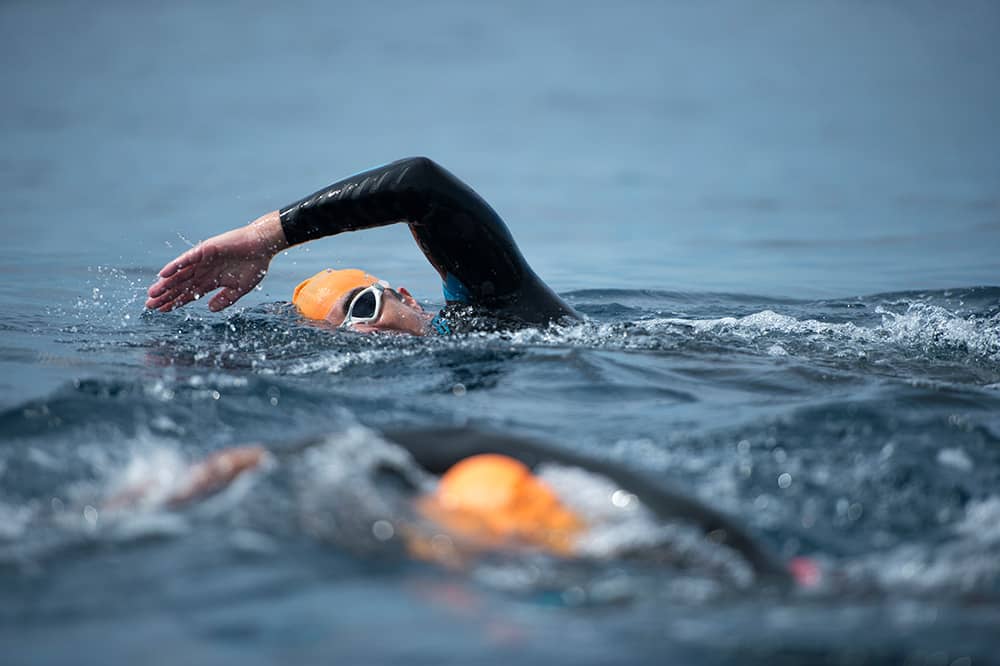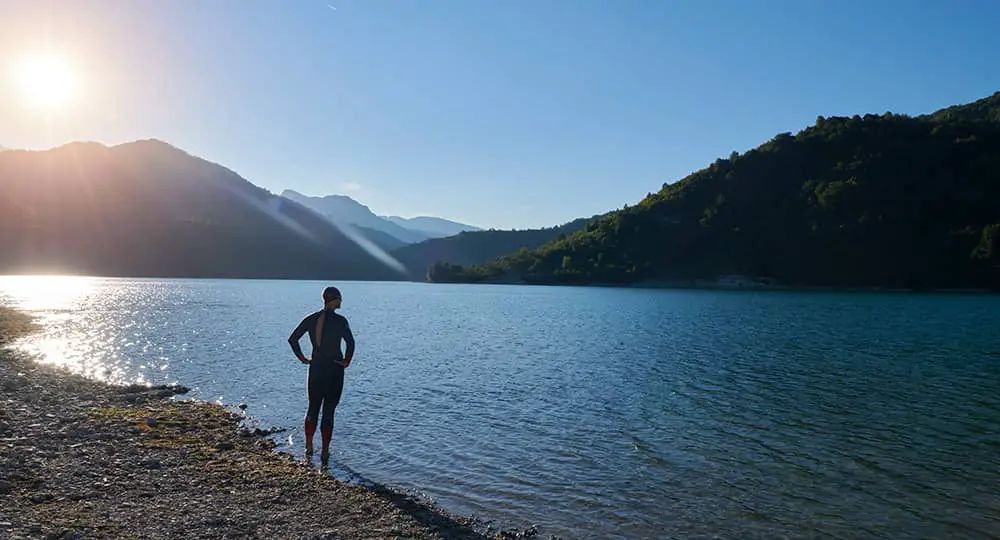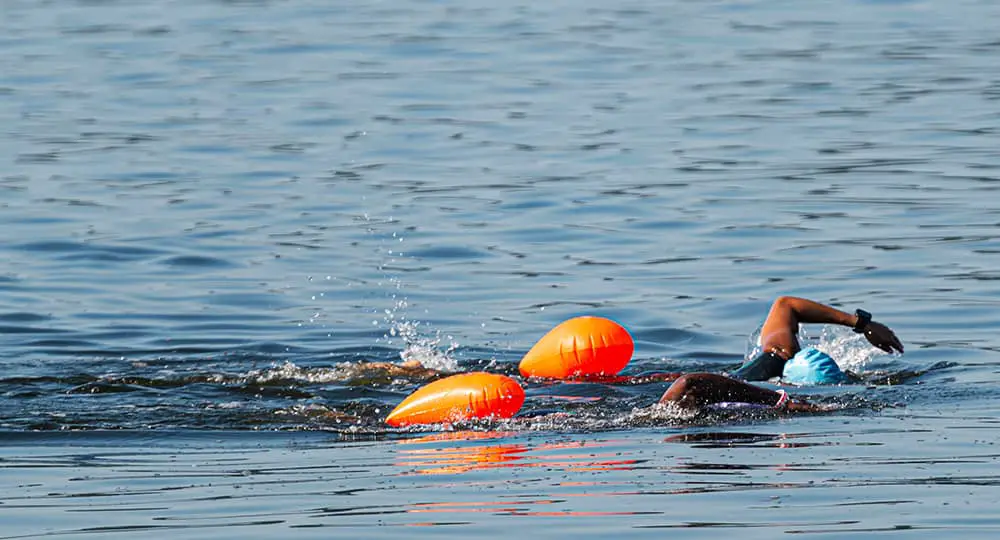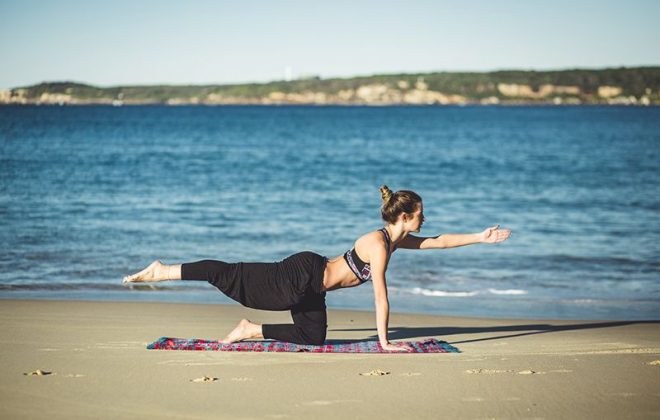3 Useful Ways How Anyone Can Prepare For Cold Water Swimming
Cold water swimming is definitely not an activity that is promoted or practiced often, compared to pool swimming. From the outside looking in it seems like torture to brave the icy winter water instead of cosying up by the fireplace with a hot chocolate.
However, a pattern I have noticed is that it just takes one dip to become addicted to the feeling of swimming in the crisp and cold water. Open water swimming generally alleviates stress, anxiety and can be an excellent form of mindfulness. Adding cold water to this equation only amps up the benefits.
I could sing praises to cold water swimming for an entire post. Instead, I want to instead share three things I wish I had done better to prepare myself for entering cold water for the first time in hopes that it will encourage others to learn more about cold water swimming. And help them be better prepared for their first swim.

Acclimatise yourself (slowly)
Acclimatising is something that I had heard about, and something which I thought began once you enter the water. Unfortunately, this is not the case. Acclimatising is the process of adjusting your mind and body to new conditions. This essentially means preparing yourself for and becoming comfortable in cold water. Even before you enter it.
The process begins at home – not when you reach the open water. The easiest way to get your body used to cold water is by having short cold showers, ice baths and using cold water to wash your hands, face and even do the dishes.
When you first add these small things into your daily routine, it will be hard but as long as you keep pushing, you will soon become accustomed to the temperature.
Repeatedly exposing yourself to cold water is vital in the acclimatisation process but remember to not overdo it. If you feel overly cold, numb or sick, do not push yourself further.
Read also: How To Develop Unshakable Confidence Through Emotional Resilience
Once you have sufficiently practised at home, you can now enter the cold open water. It can be tempting to just run and jump in to get the hard part out of the way. But this will send your body into a state of shock and breathlessness, which can then affect your swimming ability and will ultimately put you in danger.
Enter the water slowly. Try splashing your face with some of the water and also placing a tiny bit inside your wetsuit. This will let your body and mind know what to prepare for. If you are finding it difficult, try focussing solely on taking deep breaths. This will help control your breathing and heart rate while also keeping your mind occupied.

Swimming in cold water is mentally and physically challenging, so be sure to take the entire process slowly. Visualisation and determination play a key part in helping you succeed.
The good news is, the more often you engage in cold water swimming, the easier it is, and you’ll be able to do less acclimatising and more swimming.

The Resilient Athlete
A Self-Coaching Guide to Next Level Performance in Sports & Life
Are you aiming to become a resilient athlete who is able to withstand any pressure? Be able to jump on any opportunity? Take any challenge life throws at you head on?
Then this book is for you.
Learn moreGet appropriate gear for cold water swimming
The second most important way in which I wish I prepared for cold water swimming is to get the appropriate gear. It sounds silly someone would attempt to swim in cold open water without having the essential equipment. But it does happen a lot and it did happen to me.
Having no gear or the wrong gear is enough to turn people away from swimming in cold water. So, below is a list of essential gear for cold water swimming:
- Full thermal wetsuit (non-negotiable, you need this) – with neoprene gloves and booties
- Rash vest (protects you from the sharp nature of cold water)
- Swim cap and neoprene hat (layer this on top of your swim cap)
- Swimming socks
- Tow float
- Dry bag
- Emergency whistle
- Huge towel, as well as cosy and dry clothes to change into
You could say this is a long list and many items are not actually essential. And yes, while you don’t necessarily need socks and booties, it doesn’t hurt to stay as protected and warm as you can.
All these items ensure your safety in the water so you can spend less time worrying and more time swimming. Choose the brightest colours to allow you to be seen by other swimmers, boats and emergency services.

Join a local cold water swimming group
The final tip I would like to share and something I wish I had done to prepare for cold water swimming is finding like-minded people.
All it takes is a quick Google or Facebook search to find groups in your area that are experienced with open water swimming.
Finding these groups means you can swim with others and be safe. It also gives you the opportunity to learn tips and tricks of cold water swimming from experienced people.
Read also: 5 Strategies How Athletes Can Use External Accountability For Motivation
Planning regular swims with other athletes will keep you motivated. Many even organise group swims on Christmas Eve and Boxing Day which is a really nice way to engage with a community of like-minded people.
Finding local swimming groups does not mean you must join them. You can ask them questions, ask for tips or even join them for one cold water swim to gain better understanding if this is something you would like to continue doing.
Jade Farrar
Jade is a passionate writer, triathlon lover and open water swimming enthusiast. She enjoys writing about these subjects to share her wealth of knowledge and experience to help encourage others to participate in the sports.
Tags In
Related Posts
Leave a Reply Cancel reply
GET A FREE TRAINING PLAN
Subscribe to my email list and get access to a free 4-week “back in shape” training plan
You’ll also get two full-body strength sessions and some other goodies!

How did I get here?
Hey there! My name is Andrejs and I am here to inspire, entertain and get you fit for any adventure.
I went from being an over trained pro athlete to an endurance coach sharing how to listen to your body and live life to the fullest.
Traveling, new sports & activities brought new meaning to my training and made it much more effective, fun and enjoyable. And I'm here to help you do the same.


